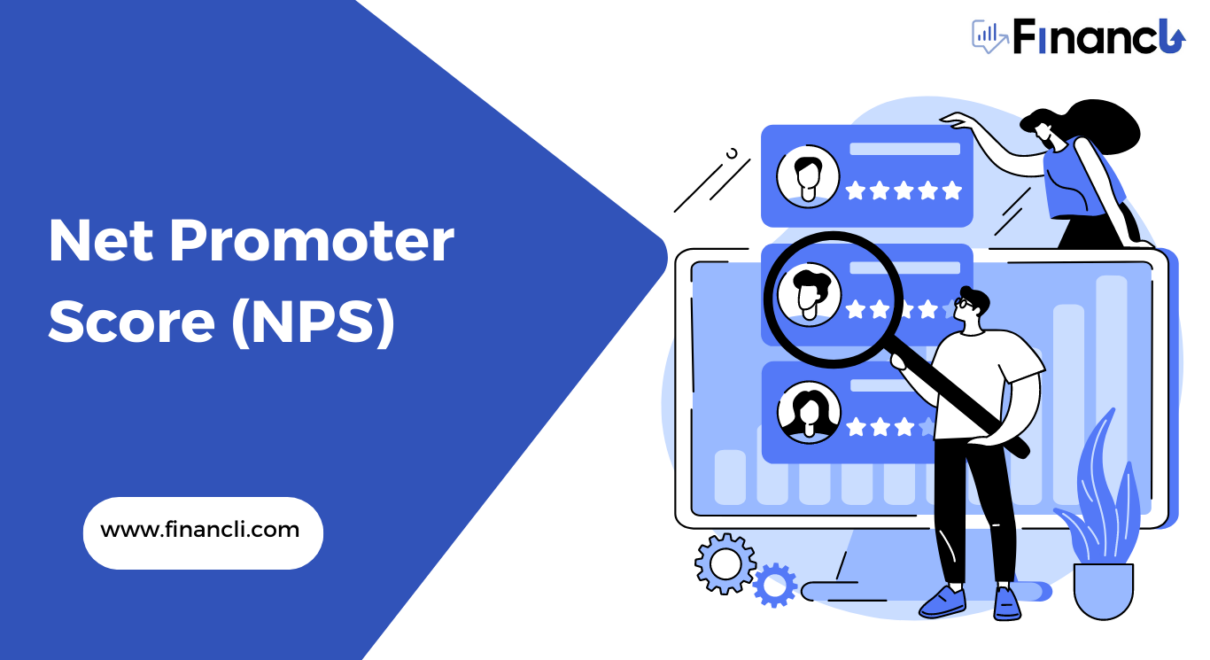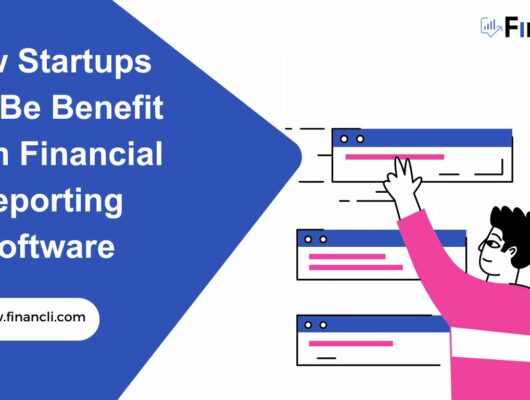Net Promoter Score (NPS) is a metric used to measure customer loyalty and satisfaction with a brand, product or service. It is on the basis of a simple question: “How likely are you to recommend this product/service/brand to a friend or colleague?” The answer is on a scale of 0 to 10, where 0 represents “not at all likely” and 10 represents “extremely likely”.

Based on their responses, customers divide into three groups:
- Promoters (score 9-10): customers who are extremely satisfied with the product/service/brand and are likely to recommend it to others.
- Passives (score 7-8): customers who are satisfied with the product/service/brand but are not enthusiastic enough to recommend it to others.
- Detractors (score 0-6): customers who are unhappy with the product/service/brand and may even discourage others from using it.
To calculate the NPS, the percentage of detractors subtracts from the percentage of promoters. The resulting score can range from -100 to +100, with a higher score indicating greater customer satisfaction and loyalty. A score of 50 or higher is excellent, while a score below 0 is considered poor.
The NPS is a popular tool businesses use to measure customer satisfaction and identify areas for improvement. It provides a simple, easy-to-understand metric to benchmark against competitors and track changes over time.
Net Promoter Score Calculation
The Net Promoter Score (NPS) is calculated by subtracting the percentage of detractors (customers who give a score of 0 to 6) from the percentage of promoters (customers who give a score of 9 or 10) among the total respondents and ignoring the scores of passives (customers who give a score of 7 or 8). The formula for calculating the NPS is as follows:
NPS = % Promoters – % Detractors
For example, if a survey has 100 respondents and 50 of them are promoters (giving a score of 9 or 10) and 20 are detractors (giving a score of 0 to 6), the NPS would be:
NPS = (50/100) x 100 – (20/100) x 100 = 30

Therefore, in this case, the NPS would be 30, indicating that the company has more promoters than detractors.
Importance of Net Promoter Score in SaaS
The Net Promoter Score (NPS) is essential in the SaaS (Software as a Service) industry for several reasons:
- Subscription-based model: SaaS companies rely on recurring revenue from their subscribers, which means customer loyalty and retention are critical for their success. The NPS provides a way to measure customer satisfaction and loyalty.
- Competitive landscape: The SaaS industry is highly competitive, with many players offering similar products and services. The NPS provides a benchmark to compare against competitors and identify areas where a company may be falling behind.
- Customer feedback: The NPS provides a quick and easy way for SaaS companies to gather customer feedback. This feedback identifies areas where the product or service needs improvement, which can help the company remain competitive and retain customers.
- Predictive power: The NPS is a good predictor of customer behavior, such as churn and upsell opportunities. SaaS companies can use the NPS to identify customers at risk of churning and take proactive steps to retain them, such as offering incentives or addressing their concerns.
Overall, the NPS is an important metric for SaaS companies to measure customer satisfaction and loyalty, identify areas for improvement, and retain customers in a highly competitive landscape.
Drawbacks of Net Promoter Score (NPS)
While the Net Promoter Score (NPS) is a popular metric for measuring customer loyalty and satisfaction, it also has some drawbacks that are as follows:
- Over-reliance on a single question: The NPS is on the basis of a single question, which may not capture the full complexity of customer satisfaction. While the question is straightforward and easy to understand, it may not provide enough detail to identify specific areas for improvement.
- Ignored Passives: The NPS ignores the scores of passives (customers who give a score of 7 or 8), which can result in neglecting important feedback. Passives may have valuable insights into the product or service that could help a company improve.
- Cultural and language differences: The NPS may be less effective in different cultures or languages. The concept of “promoters” and “detractors” may not translate well or be understood in the same way across different cultures or languages.
- Lack of context: The NPS does not explain why a customer gave a particular score. Without additional information or feedback, it may be challenging to determine why a customer is a promoter or detractor and what specific actions the company can take to improve.
- Biased sampling: The NPS may be biased if the sample of customers surveyed does not represent the entire customer base. If only a small subset of customers are in the survey, the NPS may not accurately reflect the opinions of the entire customer base.

Overall, while the NPS can be a valuable metric for measuring customer loyalty and satisfaction, it should not be the only metric used. Other feedback mechanisms, such as surveys, reviews, and customer support interactions, should also be considered to provide a more comprehensive view of customer satisfaction.
When Should a Company Run an NPS Survey?
A company should run an NPS survey to measure customer loyalty and satisfaction and track customer sentiment changes over time. Here are some critical times when a company should run an NPS survey:
- After a product launch: After launching a new product or service, a company should conduct an NPS survey to measure customer satisfaction and identify areas for improvement.
- After a significant change in the company: After a major transition, such as a merger or acquisition, a company should conduct an NPS survey to measure customer loyalty and identify any negative impacts on the customer experience.
- Annually or bi-annually: Conducting an NPS survey on a regular basis can help a company track changes in customer sentiment over time and identify any long-term trends.
- After a major customer service interaction: After a customer has had a significant interaction with customer service, such as a complaint or issue resolution, a company should conduct an NPS survey to measure the effectiveness of the interaction and identify areas for improvement.
- When competitors are gaining market share: If a company notices that its competitors are gaining market share, conducting an NPS survey can help identify areas where the company needs to improve to retain customers and compete more effectively.
By conducting NPS surveys at these critical times, companies can gain valuable insights into customer loyalty and satisfaction. It identifies areas for improvement to enhance the customer experience.
How to Run Surveys and Collect NPS Feedback?
Here are some steps that companies can follow to run surveys and collect NPS feedback:
- Define the target audience: Determine the customer segment for a survey. This may include current customers, past customers, or potential customers.
- Determine the survey method: Choose the most appropriate survey method for the target audience. Survey methods may include online, email, phone, or in-person surveys.
- Develop the survey questions: Develop questions that will help measure customer loyalty and satisfaction. In addition to the standard NPS question (“How likely are you to recommend our company to a friend or colleague?”), consider adding open-ended questions to gather more detailed feedback.
- Set a survey timeline: Set a timeline for the survey, including the start and end dates and the frequency of follow-up surveys.
- Distribute the survey: Distribute the survey to the target audience through the chosen survey method.
- Collect and analyze the results: Collect the survey responses and analyze the data to determine the NPS score and identify areas for improvement.
- Share the results: Share the NPS results and insights with relevant stakeholders, including customer service teams, product development teams, and senior management.
- Take action: Based on the survey results, take action to address areas for improvement and enhance the customer experience.

By following these steps, companies can effectively run surveys and collect NPS feedback to gain insights into customer loyalty.
Net Promoter Score: Companies Examples
Many companies use the Net Promoter Score (NPS) to measure customer loyalty and satisfaction. Here are some examples of companies that use NPS:
- Apple: Apple uses NPS to track customer satisfaction with its products and services. They have consistently ranked among the highest NPS scores in the technology industry.
- Amazon: Amazon uses NPS to measure customer satisfaction with their online shopping experience. They also use it to identify areas for improvement and enhance their customer service.
- Airbnb: Airbnb uses NPS to measure customer satisfaction with its platform and services. They use the feedback to improve their product and enhance the customer experience.
- Southwest Airlines: Southwest Airlines uses NPS to measure customer satisfaction with their airline services. They have consistently ranked among the highest NPS scores in the airline industry.
- Tesla: Tesla uses NPS to measure customer satisfaction with their electric vehicles and customer service. They use feedback to improve their products and enhance the customer experience.
- Netflix: Netflix uses NPS to measure customer satisfaction with its streaming services. They use the feedback to improve their content offerings and enhance the user experience.
- Uber: Uber uses NPS to measure customer satisfaction with their ride-sharing services. They use the feedback to improve their product and enhance the customer experience.

These are just a few examples of companies that use NPS to measure customer loyalty and satisfaction. Many other companies across various industries use NPS as well.
What is an Ideal Net Promoter Score?
The ideal Net Promoter Score (NPS) varies depending on the industry and the specific company. In general, a positive NPS indicates that a company has more promoters than detractors. However, what constitutes a “good” NPS score can vary widely depending on the industry and customer expectations.
In some industries, such as retail or hospitality, an NPS score of 50 or higher may be considered reasonable. In contrast, an NPS score of 30 or higher may be considered good in other industries, such as software or technology. It’s essential to keep in mind that a high NPS score does not necessarily mean that a company is doing everything. It’s important to use NPS as one of many metrics to evaluate customer satisfaction and identify areas for improvement.
In addition, it’s important to remember that NPS is a relative measure that compares a company’s score to those of its competitors. Therefore, what may be considered a “good” NPS score can change over time as industry benchmarks and customer expectations shift.
How to Increase Net Promoter Score?
Increasing the Net Promoter Score (NPS) involves improving customer satisfaction and loyalty. Here are some strategies that companies can use to increase their NPS:
- Identify the root causes of detractors: Companies should analyze the feedback from detractors to identify the root causes of their dissatisfaction.
- Improve customer service: Companies should focus on delivering excellent customer service to improve customer satisfaction and loyalty. It includes being responsive to customer inquiries, resolving issues quickly, and showing empathy toward customers.
- Personalize the customer experience: Companies should strive to personalize the customer experience by tailoring products and services to meet each customer’s needs and preferences through personalized marketing, product recommendations, and targeted communications.
- Leverage customer feedback: Companies should use customer feedback to improve their products and services. It involves gathering feedback through surveys, focus groups, or customer support interactions.
- Build a customer-centric culture: Companies should build a culture that prioritizes customer satisfaction and loyalty. For instance, training employees on customer service best practices, and measuring customer satisfaction and loyalty. It empowers employees to make decisions that improve the customer experience.
- Deliver on a brand promise: Companies should ensure they deliver their promises to their customers, including delivering high-quality products and services, meeting customer expectations, and providing a consistent customer experience across all touchpoints.

By implementing these strategies, companies can improve customer satisfaction and loyalty, which can lead to an increase in NPS.
How do other Metrics affect Net Promoter Score (NPS)?
Net Promoter Score (NPS) influences other metrics impacting customer satisfaction and loyalty. Here are some metrics that can affect NPS:
- Customer Satisfaction (CSAT): Customer satisfaction is a metric that measures how satisfied customers are with a company’s products or services. A high CSAT score can indicate that customers are more likely to recommend a company to others.
- Customer Effort Score (CES): Customer Effort Score measures customers’ effort to complete a task or interact with a company. A lower CES score indicates that customers find it easier to do business with a company, leading to a higher NPS score.
- Customer Lifetime Value (CLV): Customer Lifetime Value is a metric that measures the total value a customer brings to a company over their relationship. Customers with a high CLV are more likely to be loyal and recommend a company to others, leading to a higher NPS score.
- Repeat Purchase Rate (RPR): Repeat Purchase Rate measures the percentage of customers who make repeat purchases from a company. Customers who make repeat purchases are more likely to be loyal and recommend a company to others, leading to a higher NPS score.
- Customer Retention Rate (CRR): Customer Retention Rate measures the percentage of customers who continue to do business with a company over time. Companies with a high CRR are more likely to have loyal customers who recommend them to others, leading to a higher NPS score.
By monitoring and improving these metrics, companies can improve customer satisfaction and loyalty, leading to a higher NPS score.
Some Common Mistakes Companies Do in Calculating NPS
Calculating Net Promoter Score (NPS) is a straightforward process, but there are some common mistakes that companies make that can lead to inaccurate results. Here are a few examples:
- Including passive respondents in the calculation: NPS is the outcome after subtracting the percentage of detractors from the percentage of promoters. However, passive respondents, who neither promote nor detract from the company, should not be included in the calculation.
- Using an incorrect scale: NPS scores range from -100 to 100, but some companies may use a different scale or fail to use the correct scale.
- Using an insufficient sample size: To represent customers’ views accurately, companies must collect data from a sufficient number of customers. A sample size that is too small may not provide a representative picture of overall customer sentiment.
- Failing to act on feedback: NPS is only valuable if customer feedback improves the customer experience. Failing to act on feedback can lead to poor customer satisfaction and loyalty.
- Asking the wrong follow-up questions: While the NPS question is an excellent way to gauge customer loyalty, it doesn’t provide much detail about the reasons behind a customer’s response. Companies must follow up with additional questions to understand why customers feel like they do.
By avoiding these common mistakes, companies can ensure that their NPS scores are accurate.






